Last weekend, on February 25, I had the opportunity to see Our Hospitality, starring Buster Keaton, for the first time at the Hollywood Theatre in Portland, OR. My husband and I are members of the Hollywood and regularly see films there as we get in free with our membership. We also get free popcorn! We primarily go for one of their three classic film oriented series: Cinema Classics, Hollywood Babylon (pre-code), and their Pipe Organ Pictures (silent film).
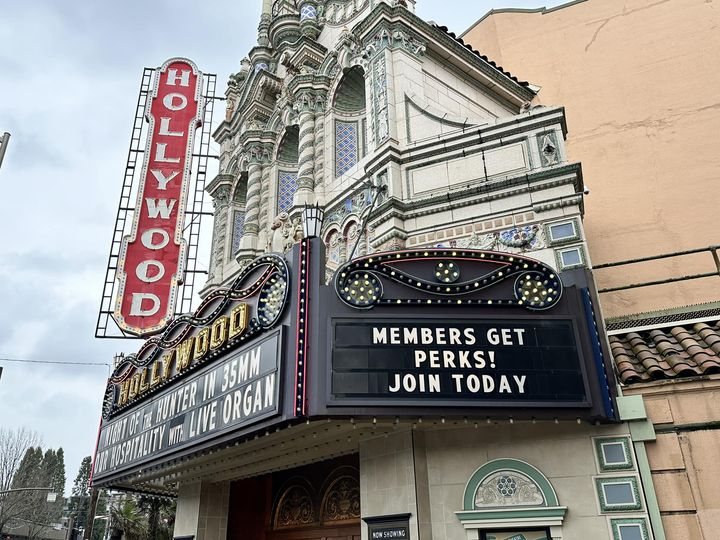
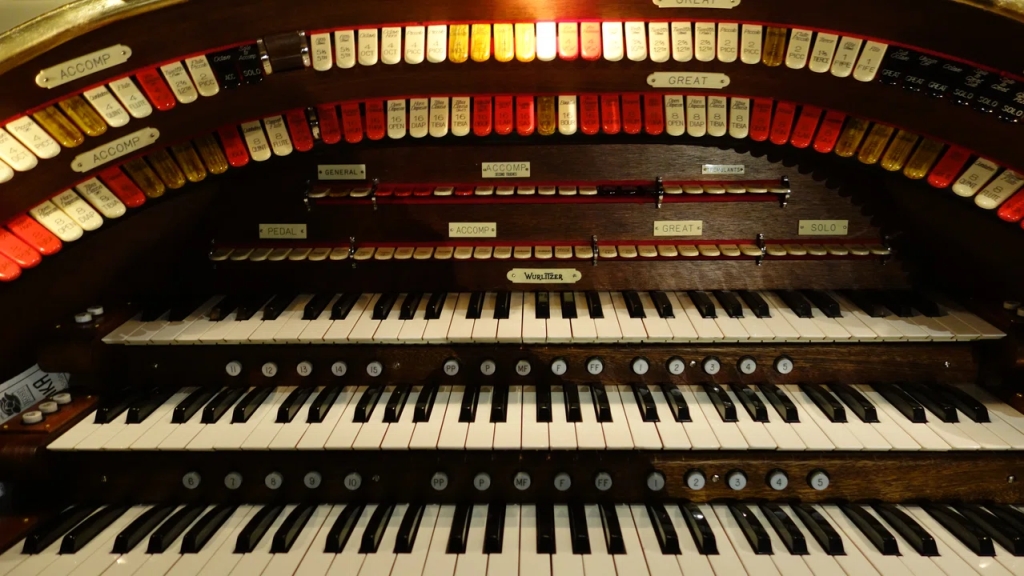
The Pipe Organ Pictures productions are a collaboration between the Hollywood Theatre and the Columbia River Theatre Organ Society (CRTOS). The CRTOS’ main mission is to preserve and promote theatre organs. Through fundraising events (such as the Pipe Organ Pictures series at the Hollywood), donations, classes, and volunteers, they’ve been able to fully restore and maintain at least two working theatre organs in the Portland, OR area–one of which lives at the Hollywood Theatre! Each Pipe Organ Pictures production features a professional musician who composes his own score and performs it live.
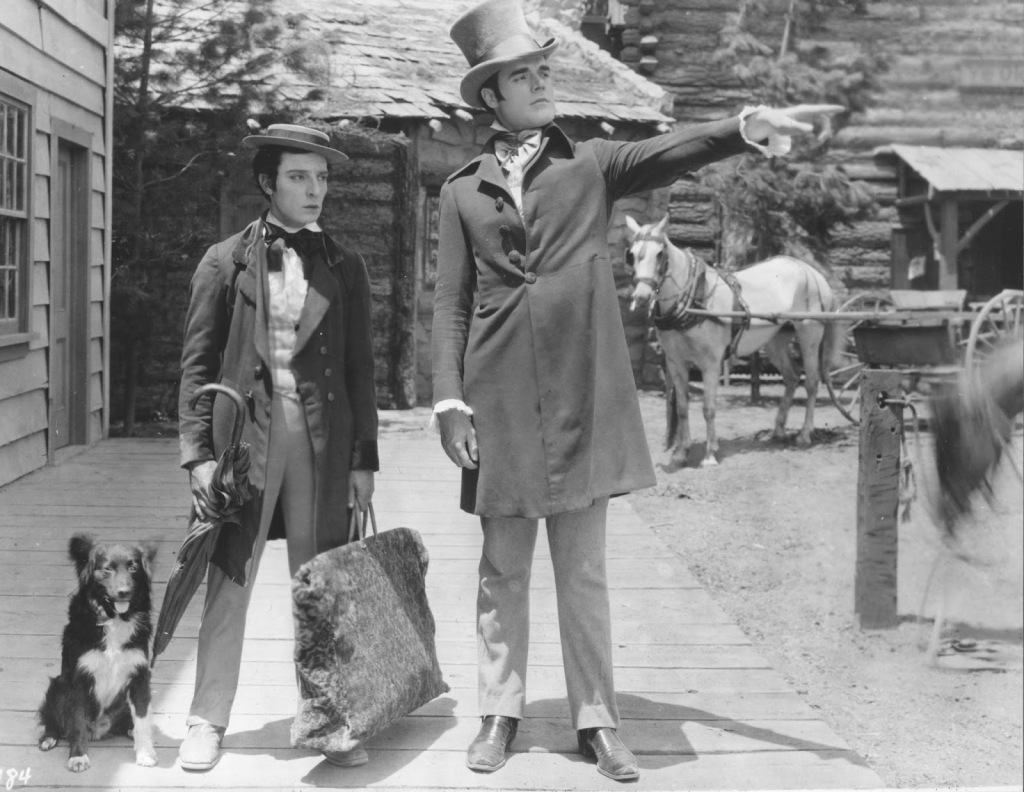
Our Hospitality was the latest production featured by Pipe Organ Pictures. Buster Keaton events at the Hollywood Theatre are always packed and this one was no exception. Our Hospitality is a re-telling of the famous 19th century feud between the Hatfields and the McCoys. In Keaton’s film, the feuding families are the Canfields and the McKays. Our Hospitality also features a Romeo and Juliet storyline that occurs when a Canfield and a McKay fall in love.
The film starts in 1810, with a mother and her one year-old son, Willie (Buster Keaton, Jr.) sitting at home late at night, waiting for her husband, John McKay to come home. Except he doesn’t. During the evening, he ends up in a deadly feud with his nemesis, James Canfield, which results in the death of both men. Mrs. McKay vows to take her son away from the violence and drama and leaves for New York where her sister lives. James’ family on the other hand, vow to avenge his death. Keep in mind that neither the living relatives of the Canfields nor the McKays have any idea why they’re in a feud. All they know is that there is a feud, per tradition. In other words, this feud is pointless and dumb.
Fast forward 20 years and a now grown Willie (Buster Keaton), learns that he’s inherited his late father’s country estate. Willie pictures an opulent mansion and jumps at the chance to redeem his inheritance. Mrs. McKay has since passed and her elderly sister gives Willie the lowdown on the McKay and Canfield feud, as a means to keep him from leaving. Undeterred, Willie boards a train headed for his father’s Southern home.
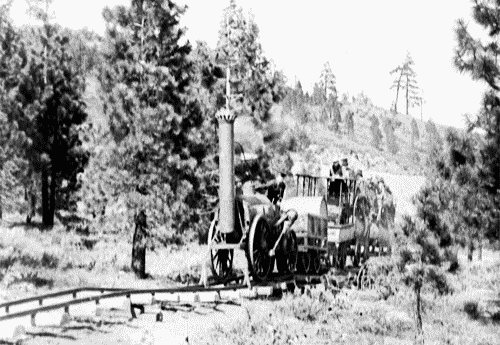
The train that Willie rides is hysterical. Based on Robert Stevenson’s 1830 Rocket train, the train is tiny, with an engine in the front, a car full of wood, three passenger coaches and a caboose. The passenger coaches resemble the type of coaches that would normally be hauled around by horse. The train is hysterically small and slow. The man on the caboose alerts the engineer of potential dangers by yelling into a long horn. The track is also funny, as it moves around, is placed on top of and around landscaping, versus the land being leveled for the track. At one point, there’s a donkey close to the track and the crew opt to simply pick up the track and move it, versus dealing with the donkey. At another point, the train is completely off the track and cruising around as if it were a car. Finally, at another point, the track switch fails, and the caboose ends up in front of the engine.
While on the train, Willie meets a young woman, Virginia (Natalie Talmadge, Keaton’s real-life wife). The two form a close bond as they endure the hilarious train trip and by the time they reach their destination, they are close friends. When Virginia disembarks the train, we learn that she is part of the Canfield family. Willie, unaware of Virginia’s heritage, innocently asks a man where John McKay’s home is. That man turns out to be Virginia’s brother and he quickly figures out that a McKay is in town. Later, Virginia and Willie meet-up again and she invites him over for dinner. When he shows up, Virginia’s brother puts two and two together and informs his father and brother that their sister is seeing a McKay.
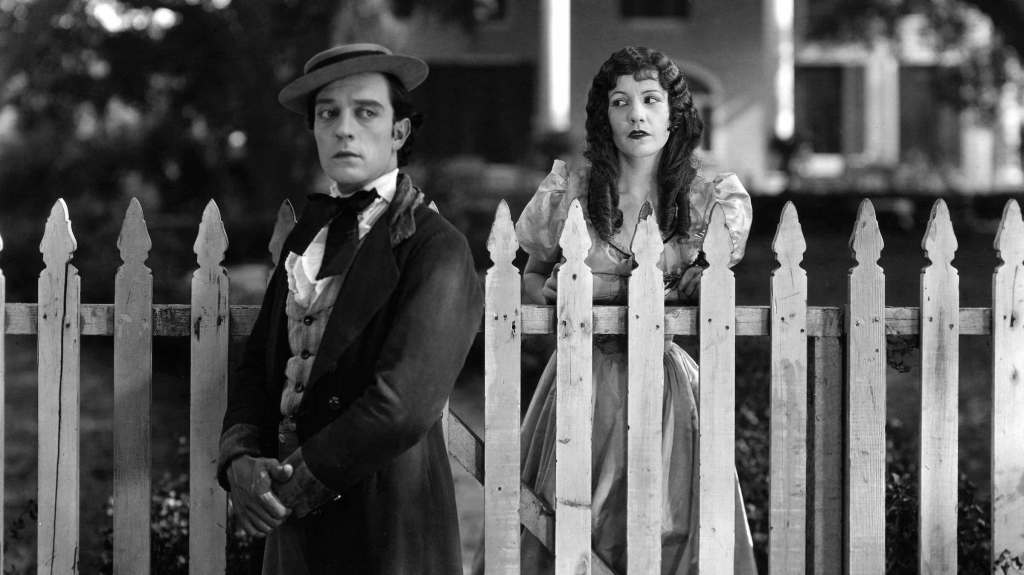
The remainder of the film depicts the Canfields chasing Willie and trying to kill him. The scene at the Canfields’ home is funny as father Canfield reminds his sons that it’s against family rules to kill someone inside their home. This starts a cat and mouse game where the brothers continually try to lure Willie outside. Willie picks up on the family rule and hilariously keeps getting back into the house to avoid being killed. His final escape is hysterical. Eventually the chase takes Willie and the Canfields to a mountainous terrain.
Buster Keaton’s stunts are always the highlight of his film and Our Hospitality is no exception. He has a spectacular stunt on a waterfall where he has to save the life of Virginia who will soon go over the side of the waterfall if something doesn’t happen quickly. Keaton’s waterfall maneuver actually elicited applause from the audience when it was pulled off successfully. This scene was absolutely insane. I cannot believe that anyone would do that stunt now, let alone in 1923. Though nowadays, CGI could be used to make it look like someone performed that stunt. Keaton didn’t have that luxury and completed the stunt himself.
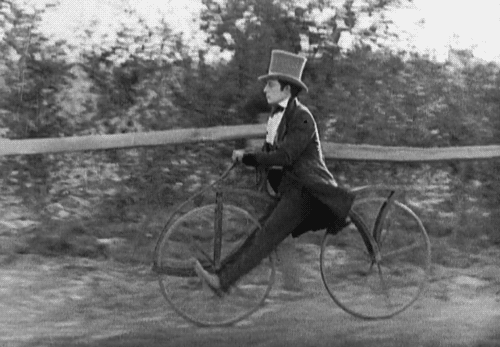
Finally, in addition to Keaton’s stunts, this film also featured unique forms of transportation. Keaton was always interested in machines, especially in trains. Aside from the hysterical Rocket train, Keaton is also shown riding a Velocipede, which even by 1830 was outdated; but was used because it was funny. This bicycle is essentially a Flintstones version of a bicycle, in that it was powered by the rider’s feet. The Velocipede was referred to as a “pedestrian curricle,” a “dandy horse,” or “hobby horse” and was an invention that was designed to replace the horse. This invention was a response to the 1816 eruption of Mount Tambora in Indonesia, which led to massive climate changes. 1816 was known as the “Year Without Summer” in which temperatures dropped severely, causing crop spoilage and food shortages. A large population of horses died due to starvation or were killed for food and their hides. Eventually, rotary cranks and pedals were added to the Velocipede, which led to the eventual invention of the bicycle.
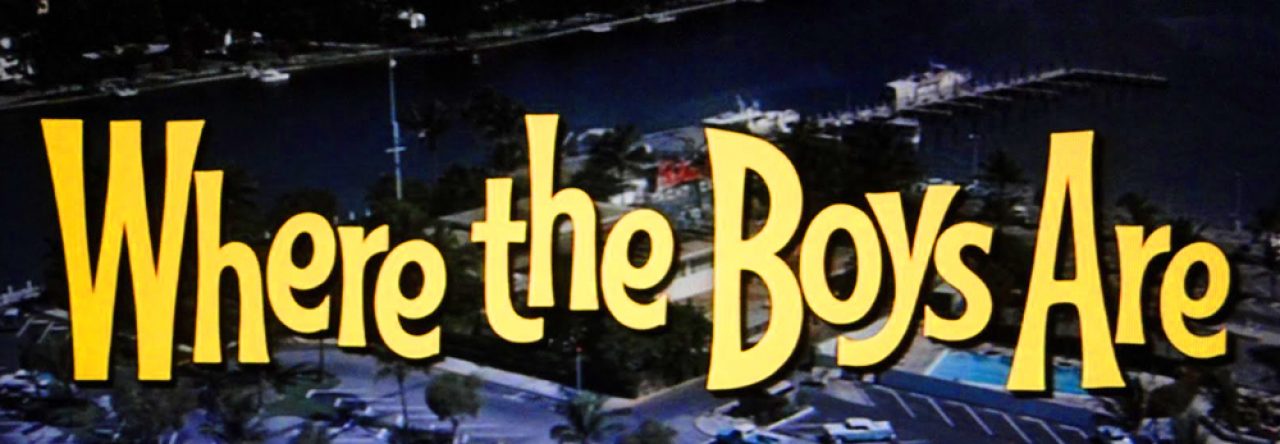
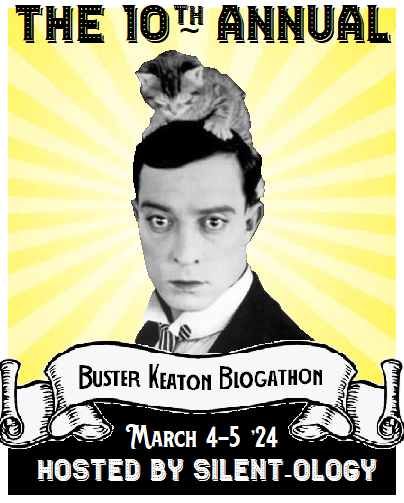
Pingback: ~The 10th Annual Buster Keaton Blogathon~ | Silent-ology
Our Hospitality is one of the best Keaton films– beautifully shot and very funny. I’m jealous you got to see it in such an agreeable venue!
LikeLiked by 1 person
You are lucky. You got to see Our Hospitality for the first time with a live musical score and you got free popcorn. As a railroad fan, Our Hospitality holds a special place in my heart. Thank you for sharing.
LikeLiked by 1 person
Buster’s films are hilarious and enjoyable anywhere, but watching them with a packed audience is just sublime! It sounds like it was a great time, I’ve been to a bunch of film festivals but right at this moment I’m jealous, lol!
Thanks for contributing this piece to the blogathon, it’s much appreciated!
LikeLiked by 1 person